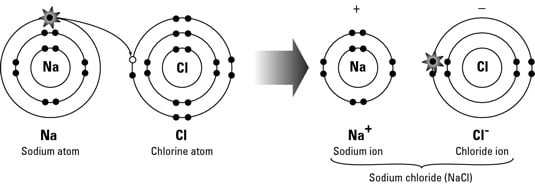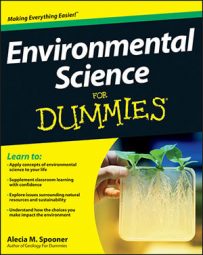Understanding the basics of ionic bonding is important in environmental science because, although ionic bonds are strong, they’re easily broken in water. For atoms to construct matter large enough for you to see or feel, they have to combine with other atoms to form molecules. To form molecules, atoms must exchange or share electrons from their outer electron shell to create atomic bonds.
An ionic bond occurs when one atom gives an electron to another atom. Atoms linked together in this way are called ionic compounds. The most familiar ionic compound is table salt, which forms as the result of an ionic bond between the elements sodium (Na) and chlorine (Cl).
When a sodium atom and a chlorine atom bond ionically, an electron from the sodium atom jumps over to the chlorine atom. When the electron exchange takes place, the sodium atom becomes a positively charged ion, and the chlorine atom becomes a negatively charged ion. Just like magnets with opposite electrical charges, the sodium and chlorine atoms cling together. The figure shows you what the ionic bond of NaCl looks like.


